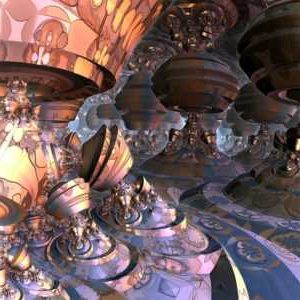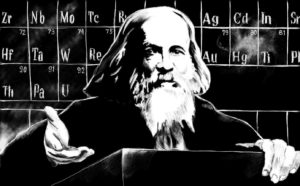Tapping Limitless Quantities of Energy
GRAVITATIONAL ANOMALIES
The expectation of gravitational anomalies associated with coherence of the zero-point energy arises directly from general relativity.
Gravity is described as curvature of the space-time metric induced by the stress-energy tensor (57). If the zero-point energy has the enormous density as predicted by Wheeler, then even a slight coherence in its activity could curve the local space-time metric producing measurable gravitational or time anomalies.
An experiment which altered the pace of time near the apparatus would suggest the ZPE’s involvement (58). Puthoff (59) has recently quantitatively explored Sakarov’s suggestion that gravity is intimately coupled to the behavior of the ZPE by proposing a model in which gravity directly arises from the action of the zero-point fluctuations.
An experiment which produced a gravitational or time anomaly would yield evidence that the ZPE is being cohered because the ZPE is the only energy appreciable enough to induce a space-time metric curvature by technological means.
How could such an anomaly be demonstrated experimentally? The ideas presented in this paper suggest the following preliminary experiment:
A piping system is shaped into a vortex ring (Figure 1) whose poloidal/toroidal size ratio is similar to the plasmoids observed by Bostick (60) in his experiments.
Charged fluid or plasma is pumped to circulate rapidly through the vortex ring. Note that the plasma is forced to undergo an effective precessional motion (a poloidal rotation closing into a toroidal rotation).
A weight change in the apparatus or a change in the pace of time nearby the apparatus would support the proposed conjecture that an ionic plasma vortex could induce a ZPE coherence.
(since we cannot duplicate the drawing in this file, Figure 1 shows a donut shape viewed from the top and generated by loops as if a Slinky toy was connected end to end “Vortex ring mainfesting precessional flow”)
An oscillatory ion-acoustic plasma vortex ring can be created with an electrical circuit. A toroidal coil is wound on a ferrite core with wire whose insulator is coated with a mildly radioactive material.
Alternatively the coil could be bombarded by ionizing radiation (61). The radiation only needs to be strong enough to ionize the air or gas near the surface of the toroidal coil, and it maintains a cold plasma.
The coil is then tuned to resonate at the ion-acoustic frequency of this plasma by adding an appropriate capacitance to the circuit. A properly tuned resonance yields ion oscillatory displacement currents in the medium surrounding the wire which acts as a wave guide.
During resonance further ionization could accrue shifting the ion-acoustic frequency. This nonlinear effect can be stabilized with a parallel, variable capacitor controlled via feedback by the magnitude of the output current.
The capacitance is automatically adjusted to maximize the output current unless it becomes too large at which point the system is intentionally detuned. If the ion-acoustic plasma vortex were to interact coherently with the ZPE, then anomalous energy production might occur in such a system.
MACROSCOPIC PAIR PRODUCTION
The plasma vortex ring motif can be applied directly to the virtual ZPE plasma to create a model of an elementary charge. Bostick showed that a pair of plasmoid vortex rings could arise from an abruptly excited, turbulent plasma (60).
In a similar fashion could electron-positron pair production arise as vortex rings from the ZPE modeled as a virtual plasma? In this analogy the charge would be associated with the helicity of the electric flux circulation on the vortex ring (62,63).
Likewise the electric (E) field lines emanating from a charge could be modeled as helical filaments (64). Here the helical filaments would originate from the charge and be sustained continuously by electric flux flowing at the speed of light. This model of E field lines offers a dynamic possibility for activating the vacuum energy.
If an E field line alone could be abruptly rotated, it would mimic the precessional flow of a vortex ring section (Figure 2) and consequently would manifest for an instant virtual charge at a macroscopic level. This would constitute a coherence in the zero-point energy.
(Figure 2 shows a 1 quarter section of the doughnut shape as described in Figure 1 “Vortex filament model of abruptly rotated E field line”) An experiment in which E field lines are abruptly rotated might yield excessive energy from the resulting voltage transients.
Such an experiment has already been done, and its description is essentially the invention by Hyde (65). Hyde uses rapidly spinning segmented rotors to abruptly cut E field lines, and his invention is reported to output power TEN TIMES THE INPUT!
The invention consists of a pair of excitor plates, a pair of segmented rotors and a pair of segmented stators (Figure 3). Charge is free to migrate on the conductive surfaces comprising the rotors and excitor plates, but on the stators the adjacent, conductive segments are electrically insulated from each other.
(Figure 3 consists of 3 parts, the first shows a simple circle labelled EXCITOR PLATE, the second shows a disk segmented into 3 section similar to the symbol for atomic hazard and labelled SEGMENTED ROTOR and the third shows a circle sectioned into 6 areas much like a pie chard evenly divided into 6 sections, it is labelled SEGMENTED STATOR “Simplified version of excitor, rotor and stator”) The components are connected as shown in the side view (Figure 4).
E R S S R E
- ł + ł ł ł ł - ł
+
- ł + ł ł ÚÄÄÄÄÄż ł ł - ł
+
- ł + ł ĂÄÄÄÄÄÄÄÄ´ P ĂÄÄÄÄÄÄÄ´ ł - ł
+
- ł + ł ł ŔÄÄÄÄÄŮ ł ł - ł
+
- ł + ł / /^\ ł - ł
+
ł ========================|=============== ł
ł ł | / ł ł
- ł + ł \ ___/ ł - ł
+
- ł + ł ÚÄÄÄÄÄż ł - ł
+
- ł + ĂÄÄÄÄÄÄÄÄ´ P ĂÄÄÄÄÄÄÄ´ - ł
+
- ł + ł ŔÄÄÄÄÄŮ ł - ł
+
- ł + ł ł - ł
+
S S
E = EXCITOR PLATE
R = ROTOR SEGMENT
S = STATOR SEGMENT
P = PULSE RECTIFIER
Figure 4. Connection of components (side view) An external voltage source charges the excitor plates which provide an electrostatic polarization field. Insulation on the device’s negatively charged surfaces insures that no current leaks from the excitor plates and little power is drwan from the charging voltage source.
The rotors are electrically connected to each other through a conductive shaft which is spun by an electric motor (not shown).
The rotors in the patent description were electrically connected by brushes to their adjacent stators, but Hyde has since improved his invention by removing these contacts (66). The field from the excitor plates induces a polarization between the connected rotors.
The segments on both rotors are aligned to allow them to shield an aligned pair of stator segments. As the rotor spins, aligned stator segments are ALTERNATELY EXPOSED and SHEILDED from the excitor polarization field.
Each stator segment is electrically connected to its counterpart on the other stator through a PULSE RECTIFIER CIRCUIT in which the transient voltage pulses are stepped down and then channeled to a combining rectifier output circuit (not shown).
It is a surprise that such a simple device as Hyde’s could output anomalous power. An analysis using just classical physics would predict that the voltage induced across a stator segment pair would swing between zero and the excitor plate voltage since this is the steady state limit for the shielded and exposed conditions. This is observed when the rotor is spun slowly.
However, when the rotor is spun on the order of 6000 rpm, a 3 KV potential across the excitor plates yields stator pulses in excess of 300 KV with a very small drag on the rotor (67).
How the ZPE could be cohered by the abrupt field cutting from the rotors is illustrated in the top view sequence in Figure 5.
E R
- ł<---------ł +
- ł<---------ł +
- ł<---------ł +
ł S
- ł<------------------ł +
- ł<------------------ł +
- ł<------------------ł +
E
ł
ł R
- ł<---------ł +
- ł<---------ł +
- ł<---------ł + S
ł ł /ł +
- ł<-\ / /ł +
- ł<-\ \_________/ / /ł +
- ł<-\ \_________/ /
\_________/
E
ł
ł
- ł
- ł
- ł
ł R S
- ł<---------ł + /ł +
- ł<---------ł + //ł +
- ł<---------ł + ///ł +
///
|||
|||
VVV
Figure 5. Abrupt E field cuting sequence (top view) During the exposed condition, current flows to charge the stator segment pair. Under rapid spin, the rotor blade cuts through the gap quicker than the charge can leave the stator segment due to the current’s momentum from residual inductance of the connecting circuit.
The charge remains on the stator segment during the instant its E field lines are cut resulting in their abrupt rotation. If such an abrupt rotation of E field lines manifests virtual charge from the vacuum energy, then this charge would greatly augment the potential across the stator segment pairs and yield a more vigourous voltage transient.
Note that opposite virtual charge is created simultaneously on the outer surfaces of the connected stator segments. Quantum electrodynamics allows virtual charge pair production from the ZPE as long as charge is conserved. This analysis of Hyde’s invention suggests virtual charge pair production in the macroscopic realm.
The resulting transient zero-point energy coherence accelerates the charges of the stator segment circuit, and the system outputs anomalously excessive energy.




Thank you for the useful information